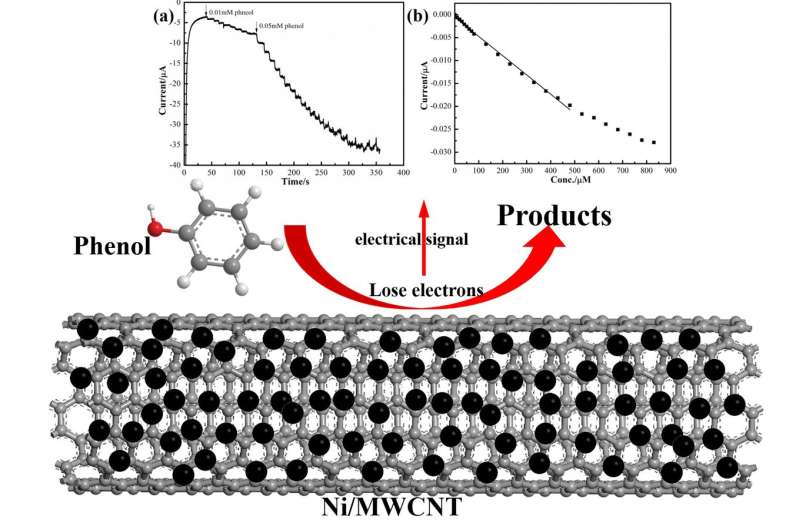Ni/MWCNT-based electrochemical sensor for fast detection of phenol in wastewater

In a paper published in Nano, researchers from the Harbin Institute of Technology have discovered a low cost and non-enzymatic phenol sensor that exhibits high sensitivity, good selectivity, reproducibility, and stability which has potential application in phenol detection in discharged wastewater.
Phenol as one of the recalcitrant organic contaminants is universal in wastewater. From the perspective of controlling environmental pollutants it is meaningful and desirable for us to monitor and control phenol pollutant.
Electrochemical sensor for phenol detection as an alternative technique has potential application due to its unique superiority such as portability, low-cost, convenience for handling, real-time monitoring, low maintenance and fast response. The electrode material in electrochemical sensor played a dominant role in enhancing phenol-sensing performance by increasing electron-oxidation current of phenol.
Consequently, it is crucial to screen out appropriate electrode material with high sensitivity, good selectivity, and stability for electrochemical detection of phenol. The transitional metal Ni has wide application in electrocatalyzing organic substances due to excellent catalytic activity and abundant reserves. However, Ni nanoparticle is inclined to aggregation due to its large specific surface energy, leading to decrease in active sites and catalytic activity loss.
Multi-walled carbon nanotube (MWCNT) with unique 1D structure, outstanding electrical and mechanical properties can be used as scaffold to anchor Ni nanoparticle for preventing Ni nanoparticle from aggregation, but also enhancing electron transfer rate, thus improving phenol sensing performance. This Ni/MWCNT-based electrochemical sensor has potential application in phenol detection in discharged wastewater.
The Harbin Institute of Technology team is now exploiting innovative strategies to further improve phenol-sensing performance such as enhancing sensitivity, lowering detection limit, and widening detection range while decreasing cost in the meantime.
More information: Yajing Wang et al, Ni Nanoparticle Anchored on MWCNT as a Novel Electrochemical Sensor for Detection of Phenol, Nano (2018). DOI: 10.1142/S1793292018501345
Provided by World Scientific Publishing

















